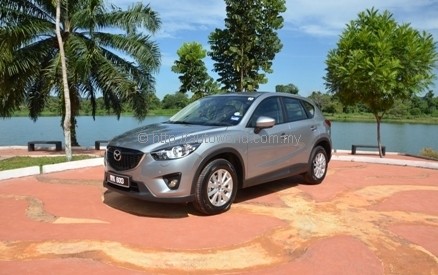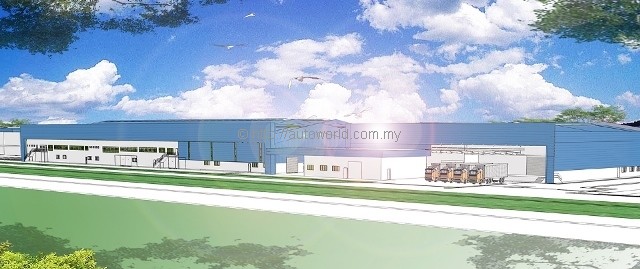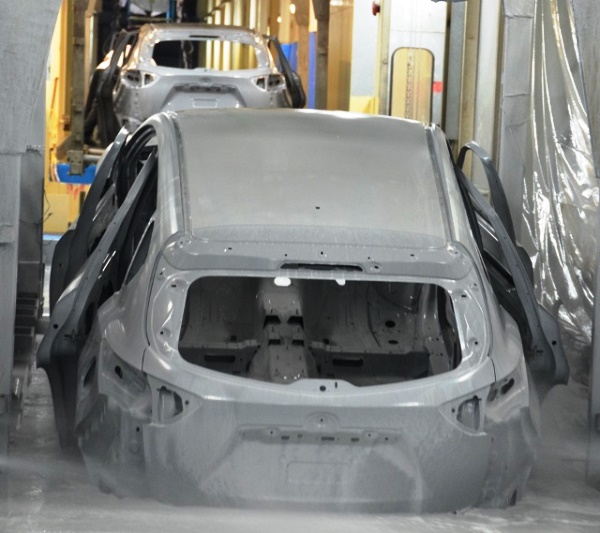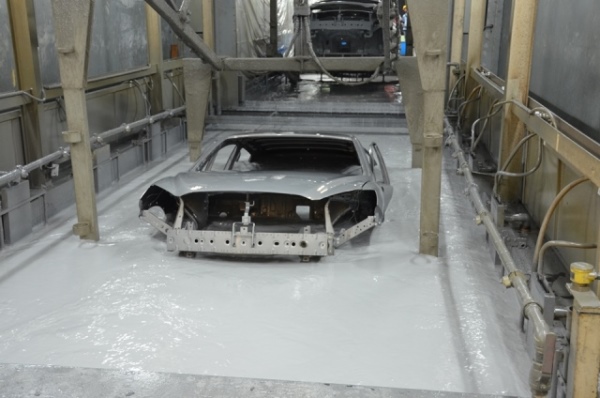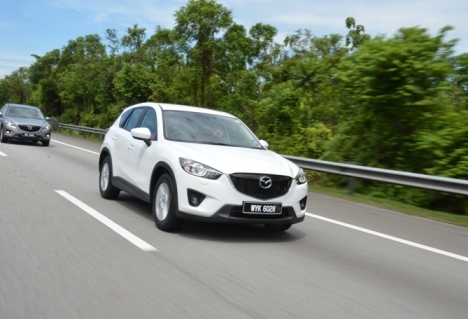An Exclusive Session with Dato Ben Yeoh on Mazda In Malaysia
Dato Ben Yeoh, Executive Director, Bermaz Motor Sdn Bhd, is the driving force behind the Mazda brand here in Malaysia. A quiet but a ‘no-nonsense’ person, Dato Ben prefers to stay away from the limelight, preferring instead to translate his visions into actions. Having been in the automotive industry since I first knew him in the early 1970’s, he needs no introduction to those in the industry, and is fondly regarded as the ‘man with the golden touch’ by associates who are close to him, including many very loyal staff who have been with him throughout the years; in the automotive industry, Dato Ben Yeoh has been hugely successful in bringing up more than one car brand, and Mazda is one of the fastest growing names in Malaysia today.
The Mazda Brand and Bermaz Motor Sdn Bhd
On 28 February 2008, Bermaz Motor Sdn Bhd entered into a distribution agreement with Mazda Motor Corporation of Japan for the distribution and retail of Completely-Built-Up (“CBU”) Mazda motor vehicles and parts in Malaysia effective 1 April 2008. For us out here in the automotive media fraternity, the growth in the popularity of the Mazda brand is nothing short of phenomenal. To Dato Ben, however, it boils down to the base principles of marketing – the four ‘P’s of products, pricing, place (distribution), and people (manpower, and the customers).
In terms of Products, Dato Ben Yeoh believes in the Mazda brand, which has agreeably an excellent range of products that covers the entire spectrum of automotive buyers. “Mazda produces high quality cars which garner high acceptance from its customers,” said Dato Ben. “The brand grew on the concept of excellent design, excellent build quality and advanced technology. Good handling characteristics and the quietness due to good NVH (Noise, Vibration & Harshness) engineering all contribute to high customer acceptance, in addition to the high safety standards. As a global company, Mazda cars meet NCAP and IIHS safety requirements,” he added.
In Malaysia, Bermaz currently offers a mix of CBU and CKD (Completely-Knocked-Down or locally assembled) Mazda models. The affordable range starts with the Mazda 2, which comes in as a CBU in both hatchback and sedan versions, both powered by 1.5 litre engines. Next comes the Mazda 3 series, locally assembled, with a choice of a 1.6 litre or a 2.0 litre engine; top of the range is the MPS, which features a brutal 255 horsepower and 380 Nm of torque from its 2.3 litre turbo-charged engine.
Further up the range, the flagship sedan model is the recently launched Mazda 6, which comes with two body options, in Sedan or the sporty Touring configuration, and with two engine options, a 2.0 litre and a 2.5 litre engine. The Mazda 6 comes with the latest SKYACTIV specifications, which includes additional fuel efficiency features such as i-ELOOP and auto engine stop.
MPV lovers have the Mazda 5, while the SUV users get a choice of the Mazda CX-5, CX-7 or the CX-9. Sports car lovers can get in close and personal with the evergreen MX-5 or the RX-8.
Bermaz on Sustainability of the Mazda brand in Malaysia
Dato Ben Yeoh went on to say that in order to sustain the Mazda brand in Malaysia, Bermaz had to put into place various actions. “We fully support the Malaysian Government’s NAP (National Automotive Policy), in terms of reducing the carbon footprint in automobiles, and at the same time, we also want to improve the socio-economic benefits of car ownership by offering more fuel-efficient vehicles at affordable prices. Mazda Corporation is on the same page with us, and I am very happy to add that Mazda fully supports our philosophy”.
In 2011, the first CKD operations of the Mazda3 started at the Inokom plant in Kulim, Kedah; this action not only brought employment to more than 300 in the relatively backwater area of Kedah, and at the same time, it significantly reduced the retail price. Last week, the first batch of the new Mazda CX-5 SKYACTIV started rolling out of the very same plant, again with a reduction in the retail price, making it affordable to a wider spectrum of the market.
CKD versus CBU Quality
The high acceptance of the locally assembled models was a strong encouragement for both Bermaz and Mazda to move on to the next level, which was a Joint Venture between the two organizations to further develop the Mazda automotive business further. Even as we speak, an entire new Mazda-specific production facility is being built at the Inokom plant in Kulim.
As part of the media activity for the introduction of the Mazda CX-5, Bermaz arranged for a visit to the Inokom plant for a group of automotive media. There, we found that the assembly of Mazda models is on its own dedicated assembly line.
Interestingly, Mazda has developed certain methodologies and processes which enable it to initiate manufacturing of cars based on low volume and cost effectiveness. Translated to the ground, this means that Mazda can start local assembly even when the potential sales volume is low; in contrast, many manufacturers require a larger minimum volume before it becomes viable for local assembly. This is based on the innovative production concept of “Monotsukuri”.
At the Inokom plant, Mazda sends engineers regularly to train the assembly workers, and has some permanent staff stationed there to keep tabs on the build quality. At very major stage in the assembly, there are stringent checks for compliance to the assembly standards. After the main body is put together, it goes into a Quality Assurance checking bay where a team of qualified technicians perform a series of measurements of key points on the body to verify compliance with the manufacturing tolerances.
Door gaps, bonnet gaps, and the matching of body panels is always an issue with local assembly; at the Inokom plant, there are many ‘instruments’ to monitor and to ensure that all panels are perfectly matched. For example, when fitting a door frame on a bare body, the front fenders are not yet fitted; so in order to ensure that the fender would have the desired gap when fitted, there is a small piece of special ‘tool’ fitted to the frame to serve as a guide for the assemblyman putting on the door frame.
The entire body frame goes through a thorough cleaning process to get rid of all oil and grease remnants before going through a dipping process to coat it with an anti-rust coating using electrolysis, before it goes into the paint shop (ED process).
At the paint shop, the body is again cleaned before it goes onto the paint line, where paint robots will give the body a more consistent spray job, after which it goes onto the assembly line proper to fit the other parts like the suspension, dashboard, engine and drive train, and finally the interior trim. At the end of the line, the quality inspectors take over to check the alignment, drive the vehicle, and even put it through a water test for leaks, before certifying it ready for delivery.
Speaking on the manufacturing of Mazda vehicles, Dato Ben stated that Mazda makes its cars lighter, which contributes greatly to fuel efficiency. On the other hand, however, Dato Ben also said that weight equals strength and durability, so in order to get the two differing conditions to work together, Mazda uses a high proportion of high tensile steel in the manufacturing of its cars. High tensile steel is lighter, yet stronger than normal steel; thus by using more of this high tensile steel, Mazda is able to produce cars that are lighter, yet meet the torsional rigidity requirements.
What is in store for the future?
Dato Ben Yeoh is very enthusiastic and optimistic about the future for Mazda in Malaysia. The rekindling of the brand since Bermaz motor Sdn Bhd opened its doors to sell Mazda cars since 2008 has been ‘encouraging’, in his modest words. The fact that Mazda Corporation and Bermaz Motor have a very close and amicable working relationship helps; Mazda responds very quickly to its customers worldwide, and Malaysia is no exception. In the five years since its inception, Bermaz and Mazda have gone from CBU sales to local assembly, to building a dedicated Mazda section at the Inokom plant; this speaks a lot for the two companies; it certainly indicates both Mazda and Bermaz is here to stay, with a potential of Malaysia being a hub for the brand in the near future.





